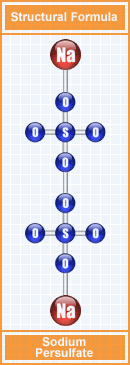Description:
Sodium persulfate is a white crystalline, odorless salt, decomposed in ethanol, and has strong oxidation. It is used to produce bleacher, oxidant and initiator for the polymerization. It has the particular advantages of being almost non-hygroscopic, of having a good storage stability in normal temperature and of being easy and safe to handle.
Application:
Sodium persulfate provides powerful non- chlorine oxidation for a wide variety of industrial and consumer uses. Its applications may be found in printed circuit board etching, activation of copper and aluminum surfaces, polymerization initiator, modification of starch, paper and textile cold bleaching and desizing, decontamination for circuit water system, oxidative degradation of harmful gas, accelerated curing of low formaldehyde adhesives, disinfectant, bleaching formulations for hair cosmetics.
Transportation:
Road/Rail: GGVS, GGVE, ADR, RID
Seat: GGV
CAS No.: 7775-27-1
Proper Shipping Name:
Sodium persulfate
UN Number: 1505
Hazard Class: 5.1
DOT/IMO Labels: 5.1 (Oxidizer)
Packing Group: II
Water Hazard Class: I (slight water hazard)
Package:
25Kg LDPE bag with two PE liner.
25Kg big woven bag with two PE liners.
1000Kg big woven bag with one PE liner.
|









